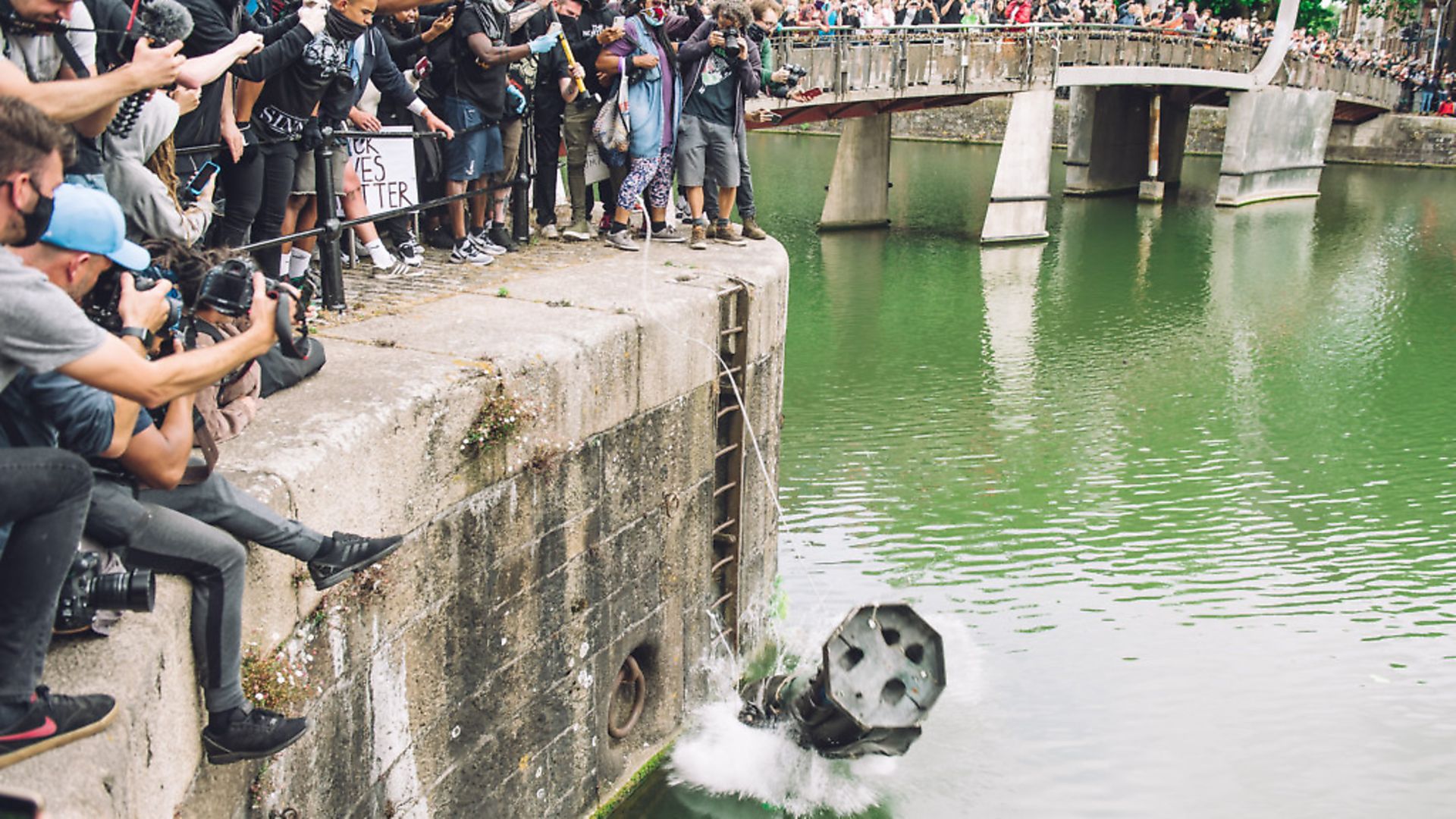
Statues and monuments have an inherent context, writes MITCH BENN. They honour and elevate people and it’s legitimate to take down those we no longer respect.
Like most of you, with the exception of some readers in Bristol, I’ve learned more about the 17th-18th century slave trading magnate (and, not that this changes anything, civic philanthropist) Edward Colston since his statue was de-plinthed and subsequently enrivered by Black Lives Matter protestors (or howling mob, depending on which paper you read) than I ever knew about him beforehand.
I’d venture to suggest that this is also true of the vast majority of people currently bewailing the statue’s removal as ‘erasing our history’, which, amusingly, would completely invalidate their own point.
We’ve been here before, of course, by which I mean you and I: long-standing, attentive and retentive readers of this column will recall that I wrote at length about a rash of similar statue-removals, in this case of heroes of the Confederacy, in the southern states of the USA back in 2017 (and the violent reaction against this by an actual howling mob). There too, the argument in favour of retaining the monuments had been that to remove them would be to ‘erase history’.
This argument was nonsense then and is nonsense now: as I pointed out at the time, a simple counter-example is post-war Germany.
Germans live in the full knowledge of the atrocities committed by their nation during the 1930s and 1940s, and yet not a single Nazi-era statue or monument remains standing. They’re remembering their history and remembering it vividly, just in the proper context.
Because statues and monuments have an inherent context; they don’t simply commemorate. They honour. They elevate. They revere. And it’s a perfectly legitimate – indeed necessary and inevitable – function of the evolution of society that from time to time we decide that there are certain things revered and honoured by our ancestors that we don’t want to revere or honour any more.
This is why the accusation being levelled against the statue-smashers (and their more sober defenders), that we’re judging a man who lived 300 years ago by modern ethical standards of which he could never have conceived, let alone lived up to, is mistaken.
Smashing a statue now isn’t retroactively condemning Colston for deeds committed centuries ago; it’s deciding that those deeds are not worthy of honour and respect today.
One could make the case, as some are doing, that men of Colston’s time had been raised in a world in which slavery was such an unquestioned fact of life that they would have been unable to perceive any more moral turpitude in making one’s fortune in the slave trade than in any other line of business.
This is itself a shaky proposition; as some historians have pointed out, the acceptance of slavery was by no means universal even then, and while abolition would not be secured until the early 19th century there was already a vocal campaign against the slave trade a good hundred years before this. But it’s beside the point anyway; whether or not Colston and his peers had any notion that what they were doing was wrong doesn’t alter the grim reality of black Bristolians in the 20th and 21st century having to live and work under a monument to the memory of a man who traded their ancestors as livestock. That reality, the reality of until a few days ago, was unsupportable.
Might there have been another way of remedying the situation? Yes, of course, but none had been taken. I read that efforts had been made over the last few decades to, if not remove the statue altogether, at least revise the wording of its plaque to something less undilutedly laudatory (it made full mention of Colston’s philanthropic and charitable contributions to the city while skipping over the whole 80,000 humans sold into bondage thing) but civic inertia and failure to agree on a new text meant that nothing had been done.
And yes, the removal of the statue was, by definition, criminal damage, but while we’re here, so was smashing the Berlin Wall and Christ’s purging of the money lenders.
It’s also worth mentioning that the statue was not a contemporary memorial of Colston; it was erected some 170 years after his death (and nearly 90 years after the abolition of the slave trade) in 1895. Just as the Confederate statues had for the most part been installed in the 1930s and 1950s as totems of white power, Colston’s effigy was a monument to British imperial dominance. No wonder they avoided mentioning where his money came from when they cast the plaque.
Meanwhile, debate has begun as to which eminent Bristolian should now occupy Colston’s old plinth. An excellent suggestion would be Paul Stephenson, Bristol’s own Rosa Parks, who organised a bus boycott in 1963 (the local bus company had a policy of only hiring white drivers, as was perfectly legal then) which led directly to the 1965 Race Relations Act.
A more frivolous nominee whom I’ve seen mentioned is Banksy. Maybe they should leave the plinth vacant and just say it’s Banksy.










